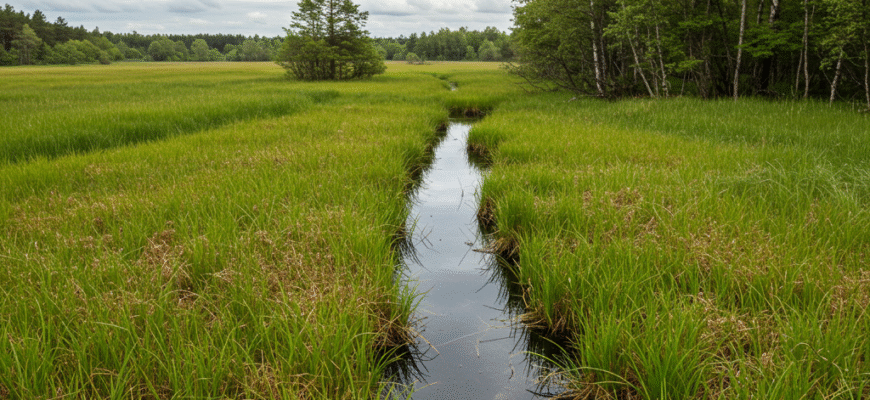Content
Defining the Wetland Realm
At its core, a wetland is an area where water either covers the soil or is present at or near the surface for varying periods during the year, including the growing season. This persistent saturation dictates the soil conditions and favors the growth of hydrophytes – plants specifically adapted to thrive in wet environments. These conditions also influence the types of animals that call wetlands home. They are incredibly diverse, ranging from vast coastal expanses to small, isolated prairie potholes. Key characteristics generally include hydric soils (soils formed under saturated conditions), hydrophytic vegetation, and the presence of water for significant periods.Marshes: The Grassy Plains of Wetlands
Picture vast, open areas dominated by soft-stemmed, herbaceous plants like reeds, cattails, sedges, and grasses, and you’re likely envisioning a marsh. Marshes are frequently or continually inundated with water, receiving most of their supply from surface sources like rivers, lakes, or tidal flows. This constant influx often brings nutrients, making marshes generally productive ecosystems. The water in marshes can vary significantly in salinity:- Tidal Salt Marshes: Found along coastlines, these are influenced by the ebb and flow of tides, resulting in salty (saline) water. They are crucial nurseries for fish and shellfish and protect coasts from storm surges.
- Tidal Freshwater Marshes: Located further inland but still affected by tidal fluctuations, these marshes contain fresh water.
- Inland Freshwater Marshes: These occur along the edges of lakes, rivers, or in depressions like prairie potholes. Their water levels often fluctuate seasonally.
Swamps: Wetlands Among the Trees
Swamps distinguish themselves from marshes primarily through their dominant vegetation: trees and shrubs. These are essentially forested wetlands. Like marshes, swamps are often saturated with water for extended periods, especially during the growing season, and receive water primarily from surface flows like slow-moving rivers or streams. The type of trees defines the swamp:- Forested Swamps (Hardwood Swamps): Often found in floodplains, these feature water-tolerant hardwood trees like red maple, cypress, tupelo, or ash. Water levels can vary greatly depending on river levels and rainfall. The dense canopy creates a shaded environment quite different from the open marsh.
- Shrub Swamps: Dominated by low-growing woody plants like buttonbush or willow. These can represent a transitional stage towards a forested swamp or exist as stable ecosystems in their own right.
- Mangrove Swamps: A specific type of saltwater swamp found in tropical and subtropical coastal areas, dominated by salt-tolerant mangrove trees.
Wetlands act as natural filters, improving water quality. As water flows through, sediments settle out, and plants and microorganisms absorb excess nutrients and pollutants. This purification service is a crucial ecological benefit provided by marshes, swamps, and bogs alike.
Bogs: Acidic, Spongy, and Unique
Bogs represent a third, distinctly different type of wetland. Their most defining characteristics are their water source, acidity, and the accumulation of peat. Unlike marshes and swamps that primarily get water from surface runoff or groundwater, bogs are typically ombrotrophic, meaning they receive most of their water and nutrients from precipitation (rain and snow). This reliance on rainfall makes bog water very low in dissolved minerals and nutrients. Furthermore, the slow decomposition rates in the waterlogged, oxygen-poor environment lead to the buildup of partially decayed plant material, known as peat. Dominating many bogs is Sphagnum moss, also called peat moss. This remarkable plant actively makes the environment more acidic by releasing hydrogen ions, further slowing decomposition and limiting the types of plants that can survive. Key features of bogs include:- Acidic Water: The pH is typically low, creating harsh conditions for many plants and animals.
- Nutrient-Poor: Lack of inflow from nutrient-rich ground or surface water results in low fertility.
- Peat Accumulation: Thick layers of peat form the substrate, often creating a spongy, unstable ground surface.
- Unique Flora: Plants must be adapted to acidic, low-nutrient conditions. This includes Sphagnum moss, heaths (like cranberries and blueberries), sedges, and fascinatingly, carnivorous plants like pitcher plants and sundews, which supplement their nutrient intake by trapping insects.
Spotting the Differences: A Quick Recap
While all are wetlands, remembering the key distinctions helps identify these valuable ecosystems:- Marshes: Dominated by herbaceous plants (grasses, reeds). Water from surface sources (rivers, lakes, tides). Can be fresh, brackish, or salt. Generally nutrient-rich.
- Swamps: Dominated by woody plants (trees, shrubs). Water from surface sources (slow rivers, streams). Usually freshwater (except mangroves). Nutrient levels vary.
- Bogs: Dominated by Sphagnum moss and peat accumulation. Water primarily from precipitation. Acidic and nutrient-poor.









